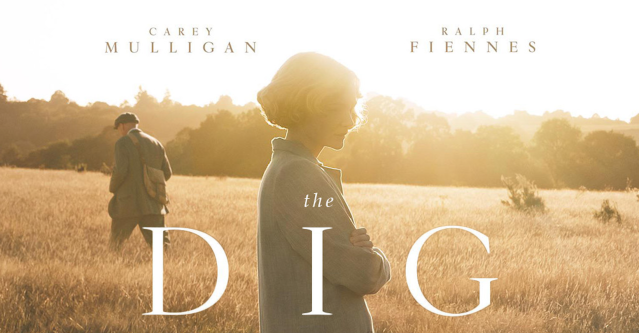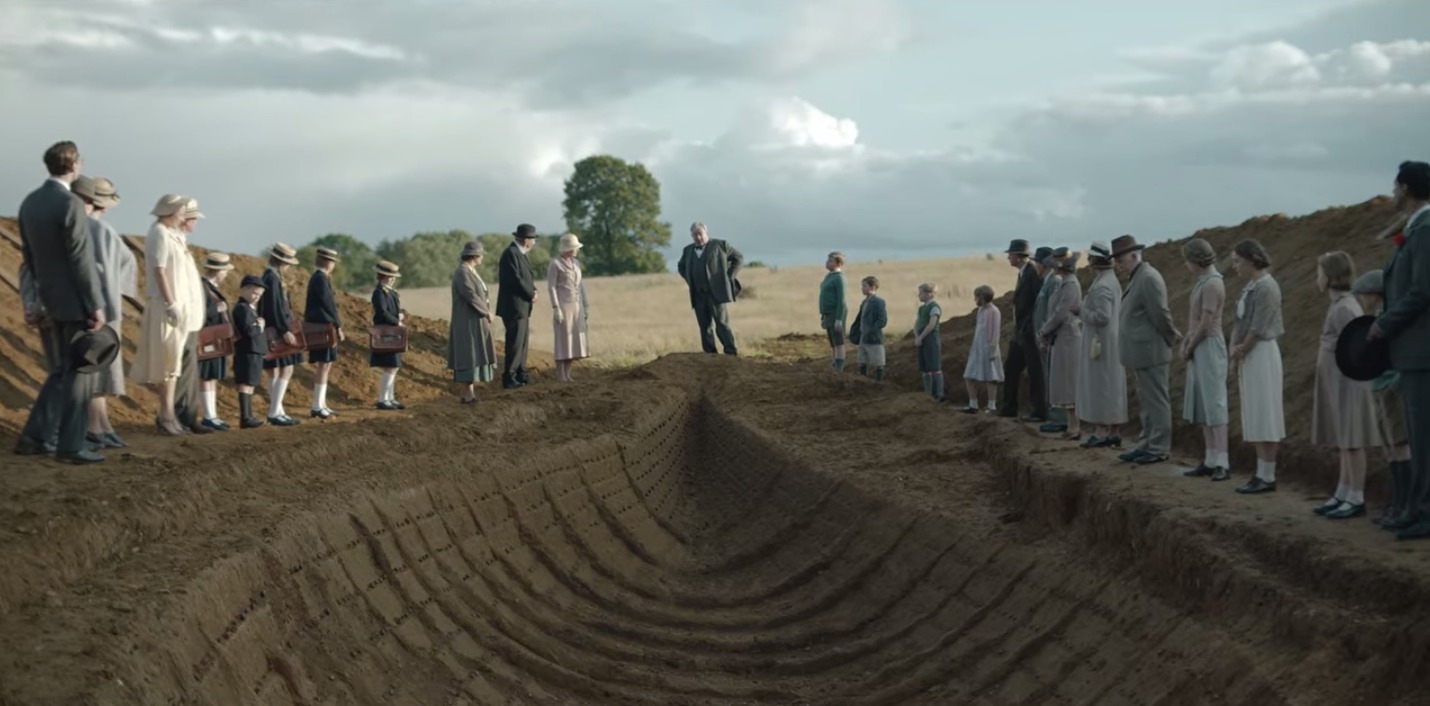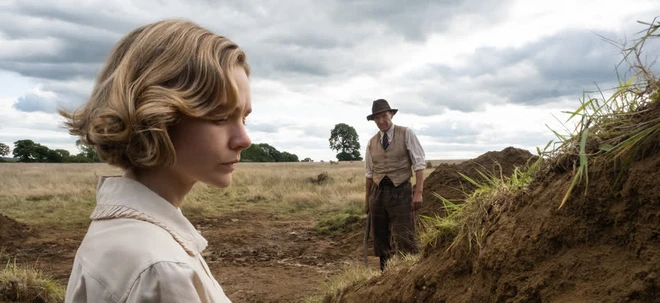The Dig (2021)

The Dig (2021), directed by Simon Stone, is a historical drama that tells the story of one of the most significant archaeological discoveries of the 20th century. Based on the novel by John Preston, the film is set in 1939 and follows the excavation of the Sutton Hoo burial site in Suffolk, England, a discovery that would reveal an Anglo-Saxon ship burial and provide vital insights into early medieval history. At its heart, The Dig is a poignant exploration of human connection, legacy, and the intersection of personal lives with historical events, framed by a backdrop of impending war.
The film begins with Eddie Marsan‘s portrayal of Basil Brown, an unassuming, self-taught archaeologist who is hired by Mrs. Edith Pretty (Carey Mulligan) to excavate the burial mounds on her estate. Edith, a widow who has inherited the estate and is dealing with her own personal grief and illness, is determined to unearth the history of her land before it’s lost. Despite the skepticism of more established archaeologists, particularly Charles Phillips (Ben Chaplin), who dismisses Brown as unqualified due to his lack of formal education, Edith places her trust in him.
Basil Brown, with his deep knowledge of the local landscape and passion for archaeology, begins his work in earnest. As the excavation unfolds, he unearths a massive ship burial, revealing treasures and artifacts that will ultimately reshape our understanding of Anglo-Saxon culture. While the discovery itself is of immense historical importance, The Dig is much more than a story about the unearthing of an ancient treasure. It is a meditation on the relationships between the characters involved in the excavation, and on the larger themes of mortality, legacy, and the passage of time.
Carey Mulligan delivers a sensitive and emotionally layered performance as Edith Pretty, capturing both her quiet strength and her vulnerability. Edith is a woman caught between the demands of her health and the legacy she wishes to leave behind for her young son, Robert (Archie Madekwe). She also forms a complex relationship with Basil Brown, one that goes beyond professional respect to one of mutual admiration and unspoken affection. Mulligan’s performance is understated yet powerful, reflecting Edith’s deep, often painful connection to the land, the history she hopes to uncover, and her struggle with her own mortality.
Eddie Marsan’s portrayal of Basil Brown is equally compelling. Marsan brings warmth and sincerity to the role of a man whose expertise is often overshadowed by his humble background and lack of formal recognition. Brown’s passion for the dig, and his quiet determination to prove the worth of his work, make him a deeply sympathetic character. His relationship with Edith, while never overtly romantic, is one of mutual respect and quiet camaraderie, as they both come to terms with their own personal struggles.
The film also introduces Ralph Fiennes as Godfrey (a fictionalized character inspired by some of the real figures involved in the Sutton Hoo discovery), a skilled and experienced archaeologist who is brought in to oversee the dig after Brown’s initial discovery. Fiennes gives a nuanced performance as a man who recognizes the importance of the find but struggles with his own insecurities and professional rivalries. His character’s internal conflict adds a layer of complexity to the story, highlighting the tension between scientific discovery and personal ego.
The cinematography by Mike Eley is beautifully shot, capturing the sweeping English countryside and the meticulous, patient process of archaeological work. The film’s pacing is deliberate, allowing the viewer to appreciate the care and attention to detail that goes into the excavation, as well as the quiet moments of reflection between the characters. The imagery of the dig itself, as Brown and his team slowly unearth the buried ship and its treasures, is both meditative and awe-inspiring, offering a sense of time stretching back thousands of years.
The historical backdrop of The Dig is significant as well. Set just before the outbreak of World War II, the impending war hangs over the story, giving the narrative an added sense of urgency and reflection. There is a constant awareness of how fragile human life and human history can be, with the discovery of the Sutton Hoo burial site offering a poignant counterpoint to the looming destruction of war. The film subtly underscores how both individuals and civilizations are shaped by the forces of time, war, and history.
At its core, The Dig is a story about legacy—both personal and historical. The characters are each seeking to leave something behind, whether it be the archaeological discoveries that will define their careers or the memories and stories they hope to pass on to future generations. As Basil Brown, Edith Pretty, and the other characters grapple with their own challenges and desires, the excavation of Sutton Hoo becomes more than just a physical act; it is a metaphor for the way we search for meaning and connection in the face of impermanence.
The film’s understated beauty lies in its quiet reflections on life, love, and loss. The characters’ personal journeys intertwine with the discovery of the past, as they find themselves confronting their own mortality and the fleeting nature of time. The burial ship, with its treasures and artifacts, is not just a historical artifact, but a symbol of human endeavor, legacy, and the desire to leave something meaningful behind.
In conclusion, The Dig is a beautifully crafted, emotionally resonant film that combines historical drama with a tender exploration of human relationships. The performances, particularly by Carey Mulligan and Eddie Marsan, bring depth and nuance to the story, and the film’s visual style complements its meditative tone. It is a film about the uncovering of history, both ancient and personal, and about how the past shapes our understanding of who we are and what we leave behind.











